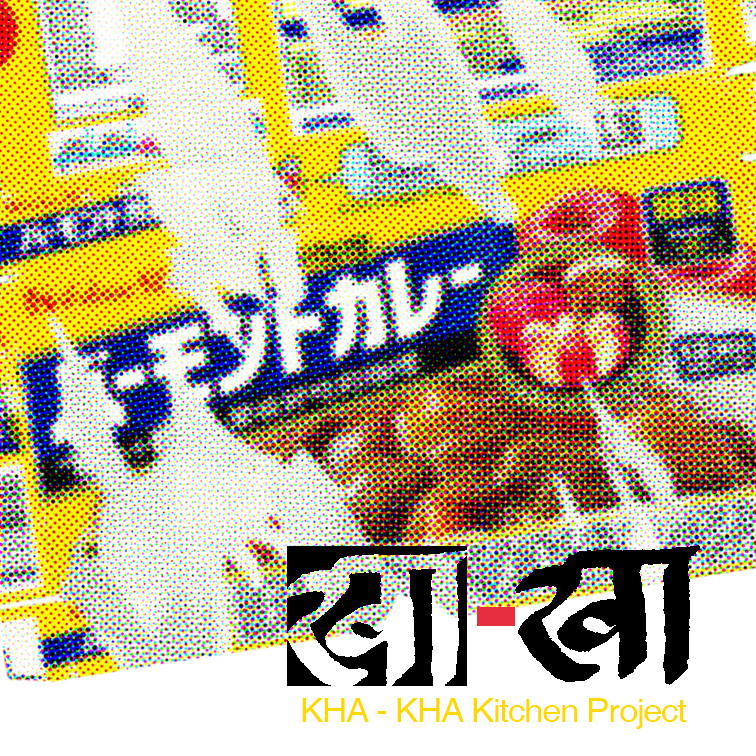Li Kuei-Pi: Kha Kha – Kitchen project
5 episodes in total. (Duration: 15-20 minutes per episode)
Kitchen is a negligible space in today’s living space, but can understand residents’ preferences, economic status and social networks. In India, some middle class housewife will never contribute their labor force in it. Her work is to make sure another labor from different class and tribe will pull the kitchen job off on time, including baking and cleaning. And the camp in Delhi, because of the help from INGO, refugees have resources to provide shelter for untouchable who are foodless and don’t have kitchen and building a special economic network in it.Kha Kha- Kitchen project would like to go inside art worker’s kitchen in Delhi in July till Oct, 2019. Invite local artists and art writers to share their observations about diet, culture and cultural policies in South Asia in recent years in a piece of kitchen time. I will record the voice and conversations that took place during the cooking process and make them to radio shows. Taking the kitchen of the artist as a node, the series of events scattered around the art.
EP.1: Tsampa pak
Ingredient
1.highland barley flour half bowl
2.butter 1 table spoon
3.salt a little bit
4.hot water
Preparation
Mix highland barley flour, and a little bit salt in a bowl, then add hot water and butter, let the butter melt in hot water and, again, mix all the ingredients until they are well mixed. Then you make small balls of the mixture and it is ready to be eaten and served.
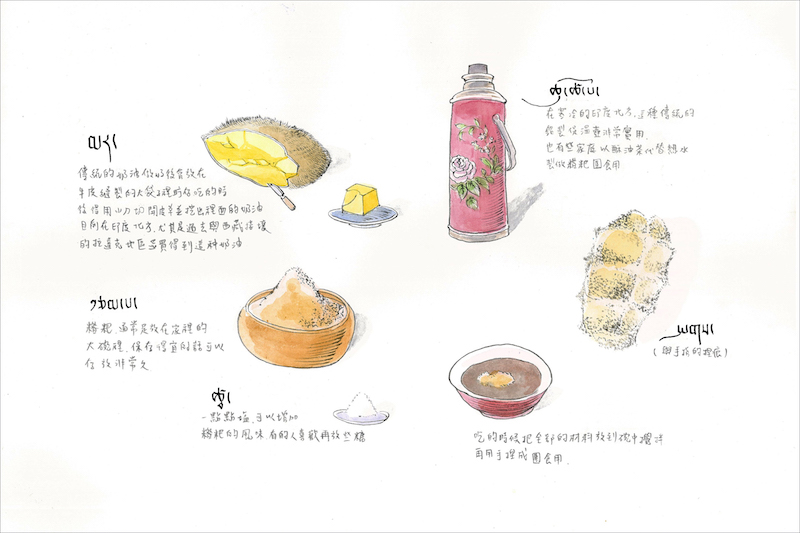
Tenzing Rigdol
Tenzing Rigdol is a contemporary Tibetan artist whose work ranges from painting, sculpture, drawing and collage, to digital, video-installation, performance art and site specific pieces. Born in 1982 in Kathmandu, Nepal, Rigdol and his family were granted political asylum in the USA in 2002. In 2005 he was awarded a BFA in Painting and Drawing and a BA in Art History at the University of Colorado Denver, USA.
He has been widely exhibited internationally and his artworks are included in public and private collections around the world. In 2011 his widely reported Our Land, Our People involved the covert transportation of 20 tonnes of soil out of Tibet, through Nepal, to Dharamsala. There, displaced Tibetans were given the opportunity to walk on their home soil once again.
In this program, artist share himself’s relationship with food, and introduce his ongoing program in India now.
EP.2: Choorma
Choorma is a traditional Rajasthani recipe, usually served with daal and baati, the combination of three is called ‘Daal Baati Choorma’. Wherein Daal is the spicy lentil soup and Baati is flattened baked dough ball. Choorma, essentially a semi dry sweet, is also a popular preparation itself. I feel the USP of Choorma is its shelf life. Once prepared it can last up to a week without refrigeration and probably more with it.
Choorma at our house is prepared by my spouse (as he is from Rajasthan) and he has slightly modified the recipe to serve our needs and taste.
Ingredient
1. Flour (whole wheat / mixed grain / millet) – 2 cups
2. Ghee (Clarified butter)- 1 table spoon
3. Aniseeds- 1 teaspoon
4. water
5. shakkar (Indian sugar made from Jaggery) or white sugar- according taste (half cup)
Preparation
1. Mix clarified butter, aniseeds and flour in a bowl. Prepare a hard dough using little water.
2. Make thick (5-6 mm), round chapattis (flat bread) and make small cut marks using a knife on the surface.
3. Cook the flat bread on slow flame in a shallow / flat pan or bake them. Make sure air does not traps in the layers.
4. Crush or grind the cool and dry chapattis using mortar pestle, into coarse mixture.
5. Add shakkar or sugar to taste and it is ready to eat.
* Submitted by Kaushal and Manmeet (India)

Manmeet Sandhu
Manmeet Sandhu is a Delhi based artist and art educator and is presently pursuing her Ph.D. from University of Delhi, in Fine Art. Her art practice is an inquiry into the ephemeral, both conceptually and materially, while simultaneously concerning herself with power struggles. Power struggles within an individual or a society or amongst the individuals between individuals and societies. The final artworks usually traverse within the forms of (short lived) montages, installations, sequential art or public intervention projects apart from drawing and painting.
She is a part of an Artist initiative called Vichar k Achaar (facebook),and also co publishes a periodical Zine called Mahila.
EP.3: Fish Curry
Ingredient
1.Panch phoran
2.Sliced onions
3.Ginger and garlic paste
4.Coriander powder
5.Cumin powder
6.Turmeric powder
7.Fresh fish cut in pieces (Rohu or Katla)
8.Mustard oil preferably
9.Bay leaves
10.Chopped tomatoes Procedure
Preparation
1.Fry the fish pieces in a pan and take some mustard oil in an another pan and heat it.When the oil is heated put the bay leaves and panch phoran in it.
2.When the panch phoran starts sputtering, put the chopped onions in it. Heating it untill the color of the onion turns to light brown.Now, put the ginger and garlic paste in it and mix the whole thing with a spatula for one minute.
3.Add chopped tomatoes and cook it until the tomatoes starts leaving oil on the surface.
4.Put two table spoons of water in the cumin and coriander to make a paste and stir it with spatula, put on a preheated pan with some oil (as per choice), so that the cumin and coriander paste does not get burnt.
5.Then, put some water in it, place the lid on, and cook for a while. Now put the fish pieces (cut) and some green chillies in it, red chilly powder is an optional ingredient to be opted by those who love spicy fish and add salt as needed. Cook it for ten minutes.
6.Then, sprinkle some finely chopped coriander leaves and the preparation is ready for serving.
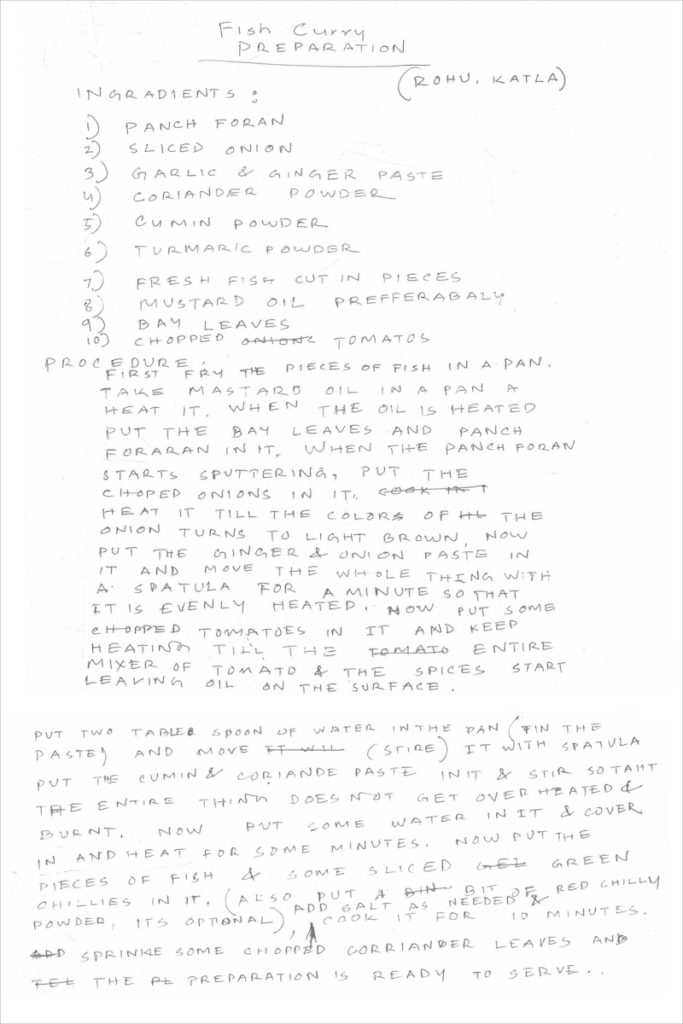
Tapas Roy
Tapas Roy was a Bangladeshi immigrant and finish his B.S. degree in physics in Bangladesh. His work ranges from painting and collage. The Prototype series comes from his experience of escaping from the home on the refugee boat during his childhood. At night, he only remembers the dark, gunshot and a noise of heavy bombardment during the war, but never know the true appearance of a war. He imagines how a war machine works by the memory of those voice in his painting.
EP.4: Thalipith
Ingredients
1.Wheat flour – 1 cup
2.Gram flour – 1/2 cup
3.Barley – 1/2 cup
4.Chilli powder – 1/2 tsp.
5.Any leafy vegetable – 1/2 cup
6.Pinch of salt
Preparation
1.Mix all the ingredients and make dough.
2.Divide into small portions and roll them and then cook with oil on trying pan.
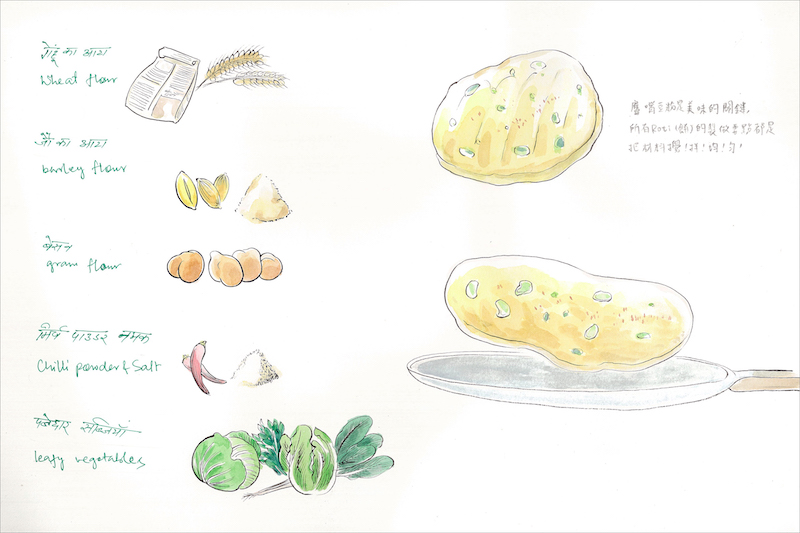
Mrinal Kulkarni
Mrinal Kulkarni is an art educator and curator, an assistant Professor in Department of Art History and Art Appreciation, Faculty of Fine Arts, at Jamia Millia Islamia New Delhi since 2007. Her articles are published in major newspapers and e-zines like Hindustan Times, Hindustan, the Observer, Financial Express, the Hindu Business Line, Rashtriya Sahara Magzine, Mattersofart.com, and artconcerns.com. She presented paper “Studio Practice and Art Education in India”, at InSEA 2014, Melbourn, Australia. Her research interests in the field of Art Education, Design education, History of Modern Indian Design, concept of Studio in art and design and New Media Art. She had curatorial projects like Dreams: Projects Unrealised 2003, New Delhi; co-curated with Johny Ml, Twilight Zone, 2004; co-curated with Johny Ml New Delhi, There is a Place in the Sun, 2004; co-curated with Johny ML New Delhi, Old Girls of Jamia I 2014, New Delhi, etc.
PS. The Hindi poetry “Bread and poetry” in the beginning of radio program is written by Manglesh Dabral (1948-) and Mrinal Kulkarni share it when I visited her. Because “Bread and poetry” write by Hindi and I can’t find it’s English translation, rough translation by myself-
Who makes bread doesn’t write poetry.
Who writes poetry doesn’t make bread.
It seems no relationship between poetry and bread.
But sometimes eating bread is like reading poetry
reading poetry is like eating bread.
EP.5: Rajma Chawal
Ingredients
Rajma – 1 cup
Finely Chopped Onion – 3/4 cup
Finely Chopped Tomato – 1 cup
Ginger +Garlic +Green Chili Paste – 1 teaspoon
Coriander Powder – 1 teaspoon
Red Chili Powder – 1/4 teaspoon
Turmeric Powder – 1/4 teaspoon
Garam Masala Powder – 1/2 teaspoon
Cumin Seeds – 1/2 teaspoon
Dry Fenugreek Leaves – 1 teaspoon
Oil – 1 teaspoon
Butter – 3 teaspoons
Cream – 3 teaspoons
Rajma Stock – 2 cups
Salt as required
1 Pinch of Asafoetida
Preparation
1.Rinsing and soaking rajma in enough water for 9 hours. Discard the water and rinse the beans again in fresh water after it.
2.Put rajma and 4 cups water in a pressure cooker, cook for 20 minutes.
3.Dicing onions and tomatoes.
4.Heating oil and butter in other pot and add cumin seeds, make it crackle and becomes brown.
5.Put the onions in the pot and saute them until golden browned.
6.Add the ginger-garlic-chili paste, stir and saute for 10 seconds on a low flame.
7.Add the tomatoes, saute for 3 minutes until it becomes soft.
8.Add turmeric powder, red chili powder, coriander powder, asafetida and garam masala powder, stir and saute them.
9.Add rajma in the pot with masala, stir and saute them for 1 minutes.
10.Add 2 cups rajma stock in the pot with pinch of salt and stir it.
11.When rajma masala has thickened and comes to the right consistrncy which is neither too thick, add dry fenugreek leaves and cream.
12.Simmer it for 30 seconds, now rajma chawal is ready to be served.
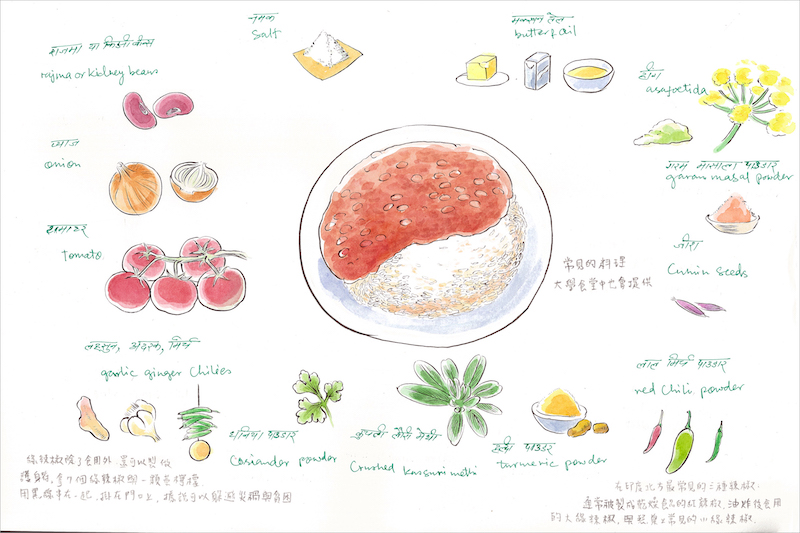
Gopal Mehan
He is a curator and artist, grown up in an artist family including many famous contemporary artists such like Rameshwar Broota, Pooja Iranna, GR Iranna and Arunkumar HG. He had foundation course in Fine Art of College of Art , Delhi. Now he is active in gallery and art space in Delhi. His work ranges from painting, sculpture, drawing and collage, to digital, video-installation, and site specific pieces, and he is focus on curating experimental exhibition also.
Li Kuei-Pi
Li Kuei-Pi (b. 1991) is currently living and working in Taipei. The focus of her work is the experience of labour under the influence of globalization. By exhibiting objects from the site of labour and intervening in the production process, the commodity is turned into an accusation against capitalism. Through this process of diverting the object from its labour site and its history, the viewer is decentred from a comfortable viewing position and asked to re-examine their relationship with labour. Kuei-Pi’s work is not an installation in an exhibition, but is an activity that challenges the production process. Although other artists are also concerned about capitalism, her focus is on the potential of traditional craftsmanship as an approach that will counteract globalization.

